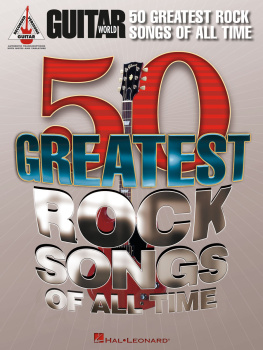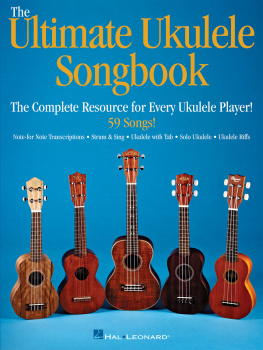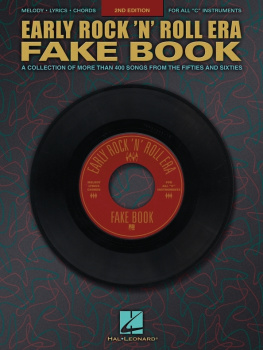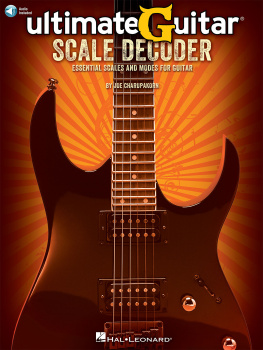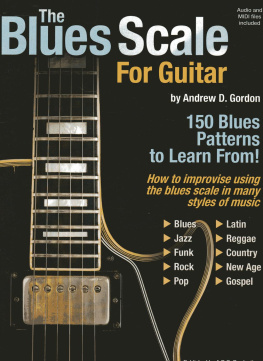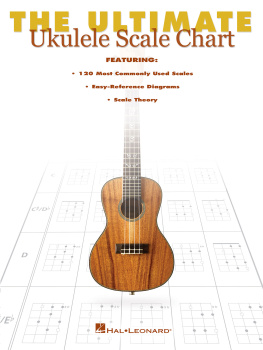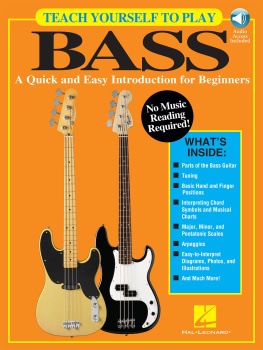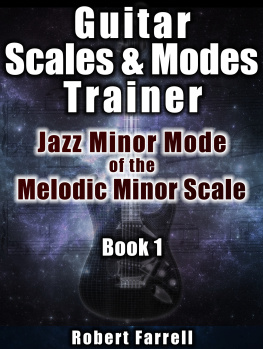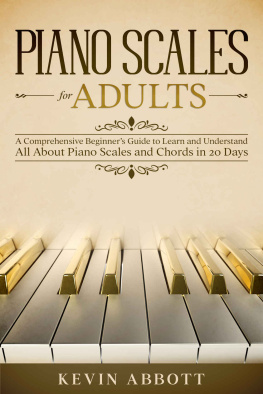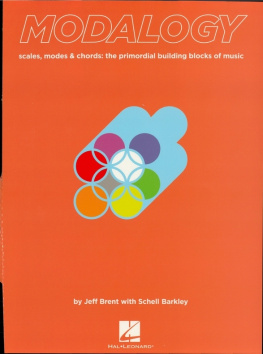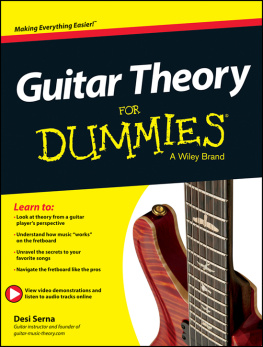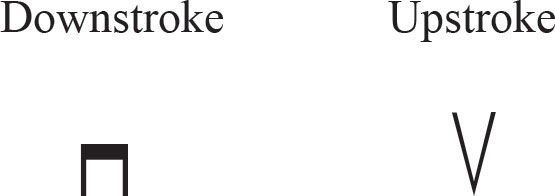
7777 W. Bluemound Rd. P.O. Box 13819 Milwaukee, WI 53213
In Australia Contact:
Hal Leonard Australia Pty. Ltd.
4 Lentara Court
Cheltenham, Victoria, 3192 Australia
For all works contained herein:
Unauthorized copying, arranging, adapting, recording, Internet posting,
public performance, or other distribution of the printed or recorded music
in this publication is an infringement of copyright.
Infringers are liable under the law.
Visit Hal Leonard Online at
www.halleonard.com
Contents
Introduction
Congratulations on your decision to learn guitar scales! Scales form the foundation for all melody, riffs, and solos on the guitar. Teach Yourself to Play Guitar Scales is an excellent place to begin, whether youve played a musical instrument before or not. This book doesnt require you to have any prior musical experience; youll be able to start playing right away, without having to learn how to read traditional music. The examples in this book are all presented in an easy-to-follow system designed specifically for beginner guitar.
This book begins with some basic guitar knowledge, the parts of the guitar, how to tune, how to hold the guitar, and how to read scale diagrams and tablaturejust the very basics to get you started. Then well dive right into the playing! As you progress through the book, youll learn the notes on the guitar and how to play major and minor scales, pentatonic scales, and blues scales, along with a simple rhythmic notation system, all shown without traditional music notation. Also included are scale patterns and exercises to help you master guitar scales and picking, all with the help of the recorded tracks so you can hear exactly how everything should sound.
The objective is to help you master the scales at your own pace. Be patient and take your time in the beginning, reviewing each example to make sure that youve got it down before moving on. Once youve learned the beginning major and minor scales and can play them smoothly, youll be well on your way. Then well continue with scale patterns, pentatonic scales, and two- and three-octave scalesall without having to read music or learn a lot of theory. By the time you get through this book, youll be equipped with the knowledge you need to continue learning and growing as a guitarist long after youve mastered everything presented here. Most of all, go have fun!
Chapter 1
Getting Started
Tuning
The strings on the guitar are tuned in order from the lowest-sounding (thickest) string to the highest-sounding (thinnest) string. The lowness or highness of a note is called pitch . The six guitar strings are tuned to specific pitches when played open (no fingers pressing them down). In order, from lowest to highest, the pitches of the open strings are: E, A, D, G, B, and E. The highest-sounding (thinnest) string is referred to as the 1st string; the lowest-sounding (thickest) string is referred to as the 6th string.
There is audio content at this location that is not currently supported for your device.
Scale Diagrams
Scales are taught in this book using graphic representations of the fretboard called scale diagrams . The horizontal lines in the diagrams represent the strings; the vertical lines represent the frets. The thick vertical line at the left of the diagram represents the nut. Scale diagrams visually correspond to the guitar as if you laid the guitar flat on your lap, with the strings facing up.
Black or white dots are placed on the scale diagrams to indicate the fretted (pressed down) notes, and the numbers in the dots represent which fingers to use to fret the notes. A number is assigned to each finger of your left hand: 1 = index, 2 = middle, 3 = ring, 4 = pinky.
Tablature
Tablature (or tab ) is another system for notating guitar music without using traditional notes. A tab staff consists of six horizontal lines, each representing a string on the guitar. The lowest line represents the lowest-pitched string (6th string), and the highest line represents the highest-pitched string (1st string). The numbers placed on the string lines refer to fret numbers on the guitar. If a 0 is used, it means the string should be played open (not fretted). If an X is used, then the string should be muted. Chords are represented in tab by stacking the numbers on top of each other.
Left-hand Position
Keep your left hand relaxed and your fingers arched. The first joint of your thumb and your fingertips are the only parts of your hand that should be touching the guitar. Avoid gripping the neck like a baseball bat (your palm should not be touching the guitar neck).

Place the first joint of your thumb on the back of the guitar neck.

Curl your fingers so that only your fingertips are touching the strings.
Holding the Pick
Hold the pick in your right hand by gripping it firmly between your thumb and first finger. Keep the rest of your hand relaxed and your fingers slightly curved and out of the way. You can pick the strings in a downward motion using a downstroke , or in an upward motion using an upstroke . Most of the time, youll be combining the two in an alternating down-up-down-up motion. While picking single notes, the motion should come from your wrist. While strumming chords, keep your wrist straight and let the motion come from your elbow.
Many exercises in this book will include a series of symbols above the tab to indicate downstrokes and upstrokes.
Chapter 2
The C Major Scale
The major scale forms the foundation of most other scales and chords in Western music. The notes are famously showcased in the song Do-Re-Mi from The Sound of Music .


